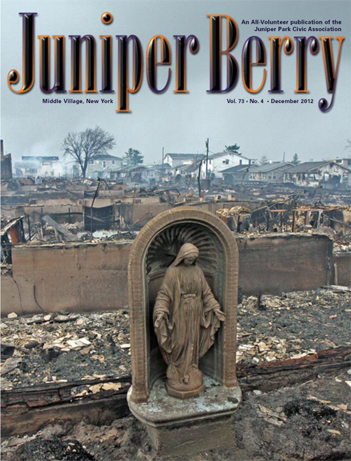Verdict of $2,500 for Estate of One of Six Persons Killed at Glendale
No Safety Gates There Though the Public Service Commission
Had Ordered Them – Court Blames the Company
Published NY Times April 6, 1912
A Supreme Court jury returned yesterday to Justice Goff a verdict of $2,500 against the Long Island Railroad for the killing of Ida Cohen, 24 years old, of 88 Avenue B, Manhattan, at the grade crossing of the Long Island Railroad at Trotting Course Lane, Glendale, on July 2, 1911.
Miss Cohen was one of five persons killed outright of six driving in a single horse carriage across the tracks. The sixth occupant of the carriage died later in St. Mary’s Hospital. The crossing was one of those for which the Public Service Commission had ordered safety gates, which the railroad had failed to provide.
Those who died in the accident were Miss Cohen, her brother Jacob, Leah Goldberg of 222 Pulaski Street, Brooklyn, Jacob Goldberg of 164 Norfolk Street and Elmer Weinberg of 29 Henry Street, Mary Sessler of Glendale, who was driving, died later in the hospital. Richard Creed, conductor of the train, sustained a fracture of the arm, and Henry L. Lefferth, the motorman, was badly cut with broken glass.
A motion to set aside the verdict was made by James I. Kearny, attorney for the railroad and opposed by Abram I. Elkus, who represented Zipe Cohen, Miss Cohen’s brother, who sued as administrator of her estate. Mr. Elkus referred to testimony that the train was going fifty miles an hour, three minutes behind time, returning from Rockaway Beach, while the carriage was traveling at the rate of four miles an hour, drawn by a gentle nine-year-old horse driven by Miss Sessler, who was familiar with the animal and with the neighborhood. In sustaining the verdict, Justice Goff said:
“There can be no doubt that the crossing was more than usually dangerous. The highway slopes gently toward the tracks, descending more abruptly about eight or ten feet before it reaches them. In the angle between the right of way and the highway and to the right of the party as they approached the tracks there is a bluff made by a cut in the road and another cut made for the railroad. The bluff is covered with trees and bushes, so that it was impossible for any of the party to look up the tracks to other right for more than four or five hundred feet until their horse was almost on the tracks. The danger of this crossing imposed a high degree of care on the railroad, which took three measures of precaution. It established a whistling post more than 1,200 feet away to the right. It erected signposts near the crossing, with the usual warning words, and it maintained a flagman. There is evidence that the train whistled at the whistling post. But the evidence is that the flagman gave no warning to the party until it was too late.”
The flagman was Louis Ammenforth, who had died since the accident. Of his actions on the occasion of the tragedy Justice Goff said:
“From his shanty he could not have seen the train until it was nearly or quite under the Myrtle Avenue Bridge, nearly 1,200 feet away. If he had started up from his seat in the shanty to give the signal at the time when he first saw the train or heard a crossing whistle, there would have been an interval of only eighteen seconds from the instant he started up to the instant of collision, for the train was making forty-five miles an hour or more. Had the railroad company exercised due care, it would have arranged some method of signaling the approach of the train which would have allowed the flagman more time. At the instant when the crossing signal was sounded, if it was sounded at all, the party, traveling about four miles an hour was about 100 feet from the track. The witnesses for the plaintiff testify that the flagman did not start from his seat to wave the flag until the horse was almost upon the second track, that on which the train was coming.
“This is testified to by the engineer, who said that he was 300 or 400 feet from the crossing when he noticed the flagman, going to the crossing. That would be four or five seconds before the collision. The absence of the flagman is an implied invitation for the driver to cross. The woman who was driving the carriage was familiar with the neighborhood. She knew that a flagman was stationed at the crossing. She had a right to assume that if he was not waving his flag it was safe for her to cross.”



